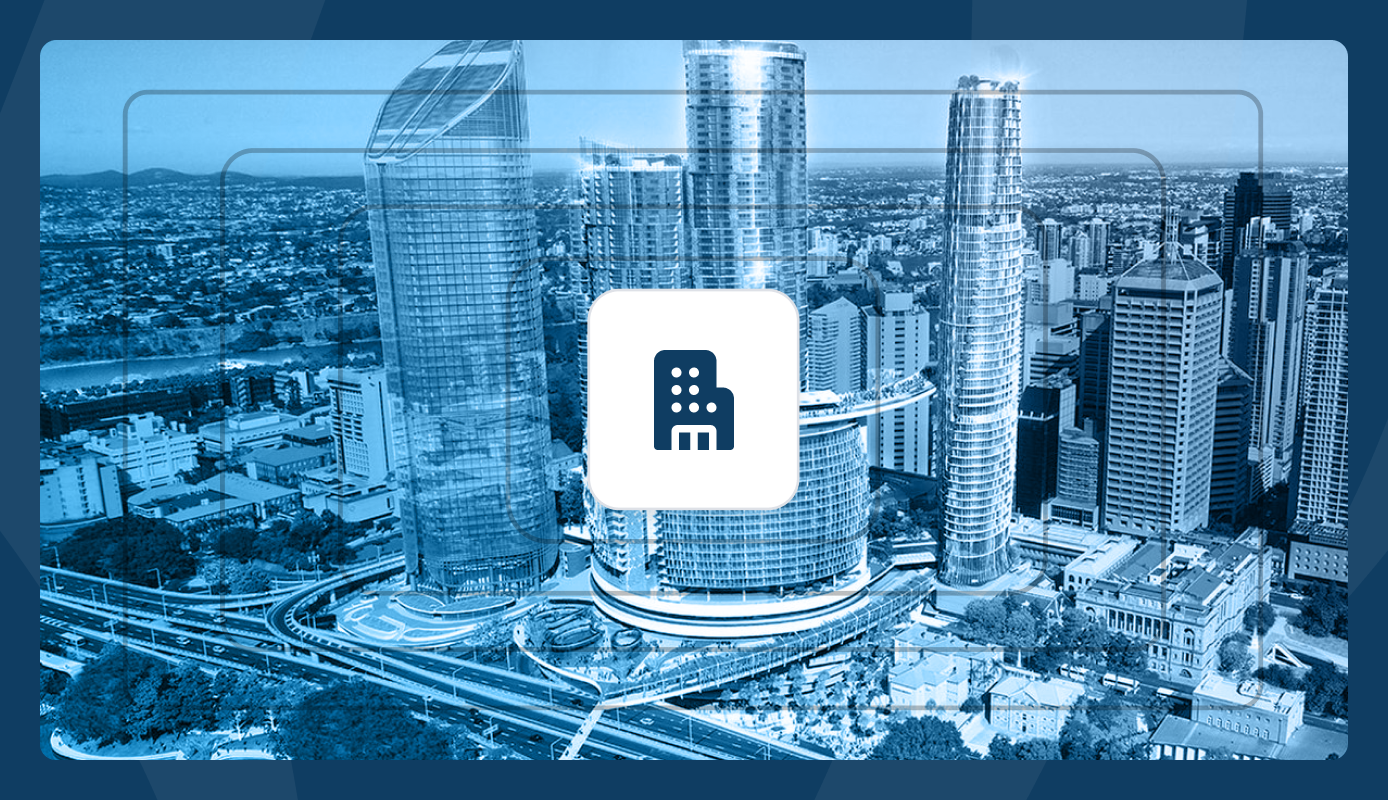Property development means changing land or buildings to make them more useful or valuable. Learn steps, roles, risks, and tools you need to start your project.

Use this FREE Project Life Cycle Template to define and outline each phase of your project. From initiation through to completion, for better structure and control.

Property development in Australia involves transforming land or buildings to meet changing market needs, increase value, or create new income streams. It drives city growth, housing supply, and commercial expansion in both metro and regional areas.
If you're planning a project, whether small-scale or large, you need a clear view of how development works from start to finish. This guide walks you through key stages, roles, risks, and tools to help you plan smarter and deliver with confidence.
Property development is the process of improving land or buildings to unlock higher value, better use, or long-term financial return. It includes new builds, renovations, subdivisions, and land use changes across residential, commercial, and mixed-use real estate.
Unlike passive investing, property development and real estate development demand planning, capital, and active project delivery. Developers manage feasibility studies, engage consultants, secure approvals, and coordinate construction to deliver a finished product to market.
In Australia, property development supports housing supply, drives infrastructure growth, and fuels economic development in urban and regional areas. Projects range from townhouses in Western Sydney to commercial precincts in South Australia or infill redevelopment in inner Melbourne.

The process of property development guides a project from concept to construction and ultimately to final sale or lease. Every successful development in Australia follows a similar path, regardless of project size or location.
Site acquisition is the process of identifying and securing land that’s suitable and viable for development. This step influences design potential, planning risk, and future profitability.
To secure the right site, property developers should complete key checks before making any purchase decisions:
Incorrect site selection can derail feasibility before planning even begins. Successful developers look for value uplift opportunities that others might overlook.
A feasibility assessment determines whether a proposed development is financially viable based on projected costs, revenues, and risks. It guides decisions before time or capital is committed.
To test the viability of a project, developers should model realistic financial and timing scenarios:
This step protects your investment and supports finance approval later. Without solid feasibility, projects risk failure regardless of their location or design.
Planning and approvals involve getting permission from local or state authorities to build what you’ve proposed. It ensures the development complies with zoning laws, and regulations.
To improve your chances of timely approval, your team should prepare a well-supported submission that addresses common objections:
Regulatory risk is one of the biggest reasons projects stall. Early planning advice can prevent expensive redesigns and appeal delays.
Financing a property development involves securing the capital necessary to fund the project, from land acquisition through to completion. Most developers use a mix of debt and equity.
To secure funding and keep drawdowns flowing, your financial strategy must be structured and aligned to project milestones:
Strong feasibility and risk management improve funding terms. Lenders look for credible delivery teams, not just project numbers.
Design and documentation translate your approved concept into technical plans for pricing, compliance, and construction. It’s where the vision becomes a buildable reality.
To avoid downstream cost blowouts, developers must coordinate consultants early and ensure plans align with both approvals and budget:
Design decisions made here impact cost, construction means and method, and marketability. Delays or rework at this stage can lead to significant cost overruns.
Construction is the stage at which your project is physically built according to the contract documents and approved plans. It requires constant oversight to stay on time and on budget.
To keep the build running smoothly, developers and project managers must maintain visibility over performance and claims:
Cash flow tracking and communication are essential during delivery. Progress claims must align with project milestones and contract terms and conditions.
Exit and delivery involve selling, leasing, or holding the finished product to realise returns. It marks the transition from project to income or capital event.
To maximise returns, developers should align delivery, settlement, and financing with the exit strategy well in advance:
An exit strategy affects project timing, taxes, and investor returns. Successful developers plan their exit early, long before the slab is poured.
A property development project involves a team of specialists who each play a vital role in planning, funding, securing approvals, and delivering the project. These professionals collaborate to manage complexity, mitigate risk, and ensure the project remains compliant and profitable.
The table below outlines the most common roles and what each one contributes at different stages:
Explicit project scope, defined responsibilities, and early alignment across property development teams lead to smoother delivery. A well-resourced team reduces uncertainty and keeps the project moving forward with confidence.
Feasibility in property development means evaluating if a project can succeed within budget, market, and planning constraints. It determines whether the development justifies the risk and investment before moving forward.
A feasibility review weighs location, site conditions, construction complexity, and financial potential. This early check guides smarter decisions on site acquisition, funding strategy, and design approach.
Key factors that determine feasibility:
Feasibility isn’t a one-time task. It evolves as the project moves from concept to approvals, to construction. Developers who update feasibility frequently improve project cost control and reduce delivery risk.
Major risks in property development include statutory delays, delivery issues, and market or funding pressure. These risks fall into several categories and can impact the project across different project phases, from site selection through to final handover.
Below are the key risk types developers monitor:
Each of these risks can delay a project, increase costs, or reduce the final return. Identifying them early allows better planning, financial control, and stakeholder confidence.
Property development in Australia is governed by a framework of national, state, and local rules that influence what can be built and how. Understanding these requirements is essential before acquiring land or beginning detailed design.
Each planning jurisdiction has its own approval pathways, documentation standards, and zoning overlays that shape the outcome of your proposal. The earlier these are accounted for, the more efficient your project pathway becomes.
Key legal and regulatory considerations include:
Legal advisors, planners, and building consultants help interpret these rules and reduce exposure to rework or appeals. A compliant, well-documented submission is more likely to progress smoothly through the approval system.

You finance a property development by combining equity and debt to fund each project stage. Most developers secure finance through a mix of their own capital and loans, drawn progressively as the project advances.
Lenders and investors assess the project’s potential based on its financial model, risk profile, and delivery team. Effective finance planning reduces interest carry, supports payment timing, and avoids site delays. It also builds lender trust, improving access to future project funding.
Key finance components typically include:
Good funding outcomes come from well-prepared feasibility studies, transparent risk allocation, and reliable project reporting systems. Finance shapes how the project is delivered from start to finish.
Property development in Australia is being shaped by population growth, housing shortages, Environmental, Social and Governance (ESG ) regulations, and state-led infrastructure upgrades.
Key trends influencing Australian property development include:
ESG-aligned projects attract more funding. Infill sites often sell faster and retain value.

Common challenges in property development include delays in planning, rising costs, weak cash flow, market shifts, and poor coordination. These issues can stall progress, reduce profits, or increase delivery risk across any stage of the project.
These problems can arise at any point in the lifecycle, but most are manageable with the right team, systems, and planning in place.
1. Delays in approvals or planning decisions slow down the entire project.
✅ Solution: Engage an experienced town planner early and prepare alternative concepts for fast-tracking through a Complying Development Certificate (CDC) or revised development applications
2. Uncontrolled cost increases from scope creep or design changes.
✅ Solution: Lock design scope before tender, use a quantity surveyor to track changes, and implement structured variation approvals
3. Poor financial visibility during construction can disrupt cash flow and delay payment claims.
✅ Solution: Use financial tracking tools like Mastt to monitor claims, contracts, and drawdowns in real time
4. Lack of team coordination creates rework, conflicting decisions, and delivery inefficiencies.
✅ Solution: Assign a dedicated project manager and use shared platforms to align consultants and milestones
5. Shifting market conditions, such as rate rises or falling buyer demand, weaken returns and limit funding options.
✅ Solution: Model different market scenarios during feasibility and secure alternative finance or exit strategies early
Addressing these challenges requires active planning and strong systems across the project lifecycle. Developers who anticipate disruption can respond quickly and maintain performance from project planning to delivery.
Property developers use digital tools to plan feasibilities, manage finances, and coordinate delivery. These platforms reduce guesswork and bring transparency to timelines, costs, and approvals.
Valuable tools for development teams include:
Utilising construction project management software like Mastt enhances accuracy, saves time, and facilitates faster and more informed decision-making. Developers who adopt these tools early gain better visibility and stronger control over delivery across the entire lifecycle.
Every successful development starts with clarity, the right tools, and a committed team. When you plan well and stay in control, you set the foundation for strong outcomes.

Cut the stress of showing up unprepared
Start for FreeTrusted by the bold, the brave, and the brilliant to deliver the future